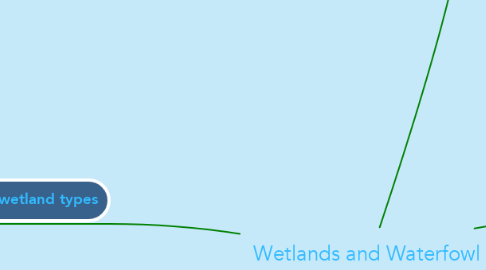
1. Major wetland types
1.1. Swamp
1.1.1. Swamps are basicaly flooded woodlands. the soils are almost always waterlogged and some times they dry during the hot summer months. In Michigan there are many types of trees and shubs that grow in the swamp but there are also many animals like reptiles, birds and mammals.
1.2. Marsh
1.2.1. Marshs are what many people call flooded grasslands. Marshs have about and inch to a few feet of stationary water but the water hight changes depenting on the time of the year. The marsh houses many types of life from aquatic plants and animals but mostly things like cattails and fish and there are some mammals living there too.
1.3. Bogs
1.3.1. Bogs start to form when dying plants grow on top of the water causing there to be as sponge like layer of plant matter on top of the water. Bog are home to make exotic and animals like the spotted turtle and the southern bog lemmin. Most bogs have acitic soil and it is hard for things to survive there but there is a type of bog the has nutreint rich soils it is called a fen.
2. Life Cycles of three Common Waterfowl
2.1. Blue Winged Teal
2.1.1. Blue Winged Teal breeding pair like to go into flooded lowlands or grass lands to build a nest they like to be close to water but they can build nests up to a mile away from water. The avarage amount of eggs from Blue Winged Teals are ten eggs and incubation period is about 23 days.
2.2. Wood Ducks
2.2.1. Wood Ducks come to Michigan during march. Since females don't have a lot of fat they go to near streams because then they can feed on acorns and aquatic plant seeds and have about 12 eggs and the incubation time is about 28 days.
2.3. Mallards
2.3.1. Mallards breeding range is the biggest in North America because they form bonds in the breeding months. The females usually go to places close to water because they feed on aquatic invertabrates like crustations and mollusks. Also they have about 10 eggs and their incubation time is 25 days.

